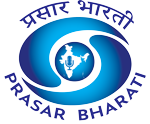The Union Cabinet chaired by Prime Minister Narendra Modi on Wednesday approved the Export Promotion Mission (EPM) — a flagship initiative aimed at strengthening India’s export ecosystem with a total outlay of ₹25,060 crore for the period 2025–26 to 2030–31.
The EPM, first announced in the Union Budget 2025–26, seeks to enhance India’s export competitiveness, particularly for MSMEs, first-time exporters, and labour-intensive sectors. It will consolidate multiple fragmented schemes into a single, outcome-oriented framework that is flexible, technology-driven, and responsive to global trade challenges.
The Mission will be implemented through two sub-schemes — Niryat Protsahan and Niryat Disha. While Niryat Protsahan focuses on improving access to affordable trade finance for MSMEs through measures such as interest subvention, export factoring, and collateral guarantees, Niryat Disha will provide non-financial support for export quality, compliance, branding, packaging, trade fairs, warehousing, and logistics.
The EPM also brings together key export support programmes such as the Interest Equalisation Scheme (IES) and the Market Access Initiative (MAI) under one coordinated mechanism, aligning them with current trade priorities. It will address long-standing challenges in export finance, compliance costs, branding gaps, and logistical constraints, especially for exporters in interior regions.
According to the Ministry of Commerce and Industry, the Mission will prioritise sectors affected by recent global tariff escalations — including textiles, leather, gems and jewellery, engineering goods, and marine products. These interventions aim to safeguard export orders, protect employment, and promote market diversification.
The Directorate General of Foreign Trade (DGFT) will serve as the implementing agency, managing all applications and disbursals through a dedicated digital platform integrated with existing trade systems. The initiative is expected to expand access to affordable trade finance, enhance compliance and certification readiness, improve global market visibility, and increase exports from non-traditional districts and sectors.










